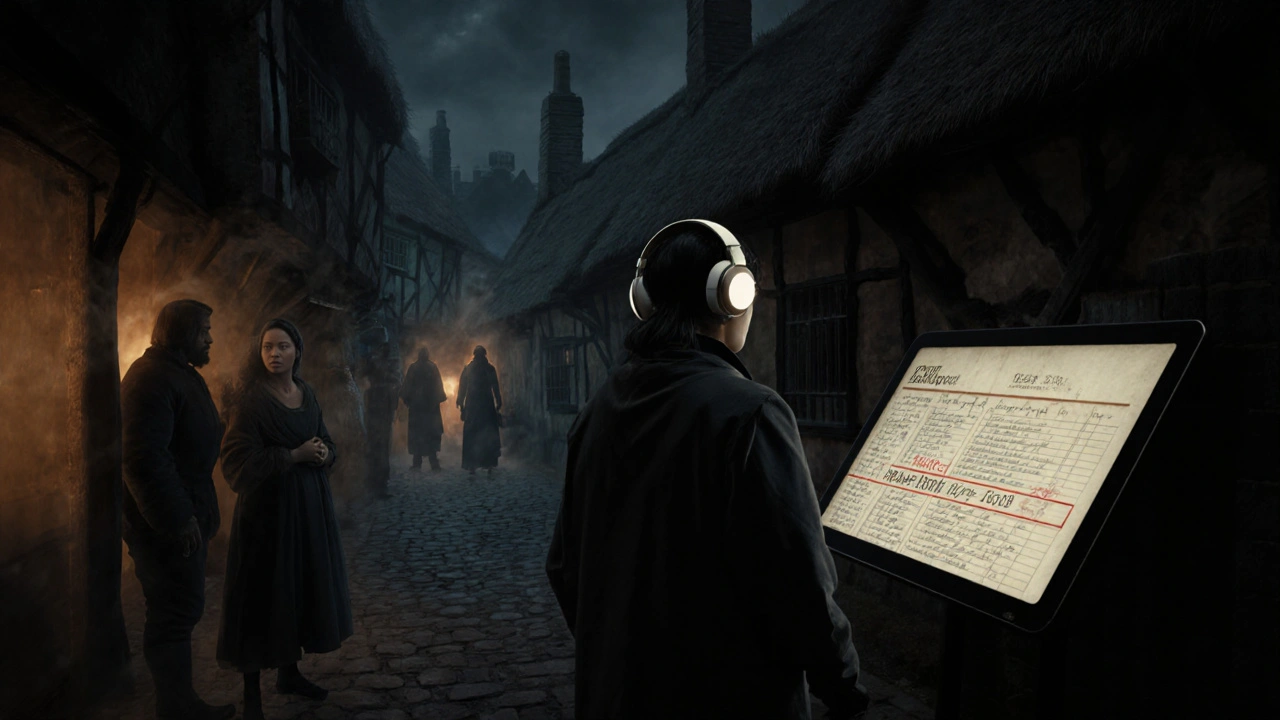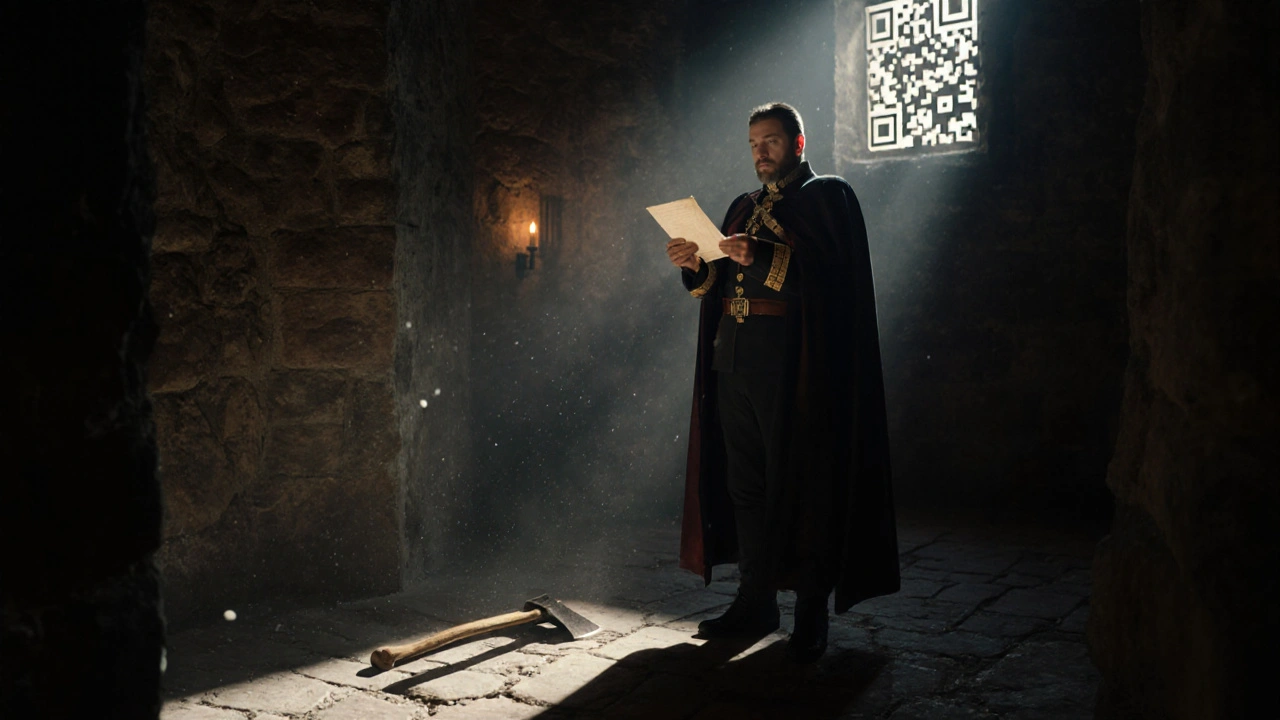Where History Comes Alive: The Best Interactive Historical Sites in London

In London, history doesn’t sit behind glass cases-it steps out of the shadows, speaks in voices, and lets you walk right into the moment. Forget dusty plaques and silent halls. The city’s most compelling historical sites now use touchscreens, augmented reality, live actors, and even scent stations to pull you into the past. Whether you’re a lifelong Londoner tired of the same old landmarks or a visitor looking for something deeper than a double-decker tour, these are the places where history doesn’t just exist-it breathes.
Immersive Tudor Life at Hampton Court Palace
Just a 35-minute train ride from Waterloo, Hampton Court Palace doesn’t just show you Henry VIII’s bedchamber-it makes you feel like you’ve walked in on him mid-argument with Anne Boleyn. The interactive historical sites here include a fully voiced, motion-captured Tudor courtier who responds to your questions in period-appropriate language. Stand near the Great Hall, and a hidden speaker plays the crackle of a real fire, the clink of tankards, and the murmur of courtiers gossiping about the King’s latest wife. The palace’s new AR app, launched in spring 2025, lets you point your phone at the maze and see how it looked in 1530, complete with courtiers getting lost and servants racing to fix the hedges. It’s not a reenactment. It’s a time slip.
Walk Through the Plague Streets at the Museum of London
London’s Museum of London, now reimagined in the City near Smithfield, doesn’t just display plague masks and burial records. Its London in 1665 experience uses spatial audio and scent diffusion to recreate the smell of burning juniper (used to purify the air), the damp wool of plague victims’ clothes, and the distant toll of a church bell calling for the dead. Visitors wear lightweight headphones that trigger different sounds as they move through the exhibit-step into a recreated alley, and you hear a woman sobbing as she wraps her child in a sheet. A touchscreen lets you trace your own family’s possible movements during the outbreak using digitized parish records. Over 70% of visitors say they felt physically moved by the experience. It’s not just education. It’s empathy.
Live Action at the Tower of London: The Yeoman Warders’ Storytelling
The Tower of London has always been spooky, but now it’s also deeply personal. The Yeoman Warders-once just tour guides in beaver hats-now perform scripted, emotionally charged monologues based on real prisoner diaries. One warder, dressed as Sir Thomas More, stands in the Bloody Tower and recites his final letter to his daughter, his voice cracking as he describes the weight of the axe. The experience ends with a QR code that links to a digital archive of More’s handwriting and a letter he wrote to his wife the night before his execution. No one just walks away. You leave holding your phone, staring at the ink smudges on a 500-year-old page.
Virtual Rebirth of the Great Fire at The Monument
The Monument, that tall stone column near Fish Street Hill, now has a hidden entrance leading to a basement exhibit that uses 360-degree projection mapping to rebuild London as it burned in 1666. You stand on a platform that subtly tilts as the fire spreads, while heat lamps flicker across your skin. The sound design includes the roar of flames, the clatter of collapsing timber, and the desperate cries of families dragging mattresses into the Thames. A tablet lets you choose a fictional character-a baker from Pudding Lane, a merchant from Cheapside-and follow their escape route through real streets that still exist today. You can even see how the fire changed the skyline by toggling between 1665 and 1670. It’s the closest thing to time travel you’ll find in central London.

Interactive Roman London at the London Mithraeum Bloomberg SPACE
Beneath the Bloomberg building in the City, the Roman temple of Mithras has been reconstructed with startling accuracy. The site’s Light of Mithras exhibit uses projection mapping on the original stone foundations to animate the rituals that took place here nearly 2,000 years ago. As you walk through the dimly lit chamber, ghostly figures in Roman togas appear, performing sacrifices under flickering torchlight. The temperature drops slightly as you pass the altar, mimicking the damp chill of the original underground space. A companion app lets you scan artifacts found on-site-coins, pottery, a carved bull’s head-and watch them come to life in 3D, showing how they were used. The site doesn’t just tell you about Roman London. It lets you stand where they stood, breathe the same air.
Time Travel by Tube: The London Underground’s Hidden History
Most people think of the Tube as a way to get from A to B. But if you know where to look, it’s also a living archive. The Underground History project, launched in 2024, turns select stations into interactive exhibits. At Bank station, a touchscreen panel lets you explore how the 1940 Blitz turned the platform into a bomb shelter. Tap on a name, and you hear a recorded voice from a woman who slept there for 57 nights. At Covent Garden, a hidden alcove plays audio from 1908, when the station was one of the first to use electric lighting. You can even scan your Oyster card at special readers to unlock personal stories tied to your journey-like the tale of a WWI soldier who took the Piccadilly Line to say goodbye to his sweetheart before shipping out. It’s history you carry with you, every time you ride.
Why These Sites Work When Others Don’t
London’s best interactive historical sites don’t rely on flashy tech for its own sake. They use technology to restore humanity to the past. A child in a school group might not remember the date of the Great Fire, but they’ll remember the smell of burning timber and the sound of a mother whispering, “We’ll find your doll.” A tourist might forget the name of a Tudor king, but they won’t forget the Yeoman Warder’s voice breaking as he recited a death sentence. These experiences work because they’re not about facts-they’re about feeling. They turn London’s layered history from a textbook into a memory.

How to Plan Your Visit
Don’t just show up. These sites book fast, especially on weekends and school holidays. Here’s how to make the most of them:
- Book tickets online at least 48 hours ahead-many interactive experiences have limited capacity.
- Download the official app for each site before you go. Some require it for AR features.
- Visit on weekday mornings. The Tower of London and Hampton Court are quieter before 11 a.m.
- Bring headphones. Audio experiences are designed for personal immersion.
- Check for seasonal events. In October, the Museum of London runs a Plague Night tour with candlelit corridors and costumed narrators.
Most sites offer family passes and discounted rates for London residents with a Zip card. If you’re a student or over 60, ask for the heritage discount-it’s often overlooked.
What’s Next for London’s Historical Experiences
The next wave is coming. In 2026, the British Museum will launch an AI-guided tour where your personal assistant-based on your interests-adapts the narrative in real time. If you’re drawn to war, you’ll hear stories from soldiers. If you’re into fashion, you’ll trace the evolution of a single silk gown from the 1700s. Meanwhile, the National Archives is digitizing 12 million personal letters, and by next summer, you’ll be able to search by location and hear the voice of someone who lived in your exact London street 200 years ago.
London’s past isn’t gone. It’s waiting for you to press play.
Are these interactive historical sites in London suitable for children?
Yes, most are designed with families in mind. Hampton Court Palace has a Tudor treasure hunt app for kids, and the Museum of London’s Plague exhibit includes a simplified audio guide for ages 8+. The Tower of London’s Yeoman Warder stories are intense for very young children, but the interactive displays and costumes keep most under-12s engaged. Always check age recommendations on the site’s booking page.
Do I need to buy tickets in advance for these sites?
Absolutely. Interactive experiences often have timed entry slots to manage crowd flow and tech usage. Hampton Court Palace, the Tower of London, and the London Mithraeum all sell out on weekends. Booking ahead also gives you access to special discounts, especially if you’re a London resident with a Zip card or a student with a valid ID.
Can I use my Oyster card for entry to these sites?
No, Oyster cards are for transport only. But many sites offer combined tickets with public transport discounts if you book through Transport for London’s website. For example, a ticket to the Museum of London includes a 20% discount on your Tube fare if purchased together. Always check the site’s official booking page for transport deals.
Are these sites accessible for visitors with disabilities?
Yes. All major sites listed here have full wheelchair access, audio descriptions, tactile maps, and staff trained in disability support. The Museum of London offers sensory-friendly hours on the first Sunday of each month. The Tower of London provides free loaner wheelchairs and quiet rooms for those overwhelmed by sensory input. Always contact the site ahead of your visit to arrange specific accommodations.
What’s the best time of year to visit these interactive historical sites in London?
Spring (April-May) and early autumn (September-October) offer the best weather and smaller crowds. Summer is busy, especially at Hampton Court. Winter has its perks: the Tower of London runs candlelit evening tours in December, and the Museum of London’s Plague exhibit has special nighttime events with themed cocktails nearby at The Blind Pig pub. Avoid school holidays if you want space to really absorb the experience.
Next Steps for History Lovers in London
Once you’ve experienced these sites, try digging deeper. Visit the British Library’s History Lab and try transcribing 18th-century letters using their digital archive. Join a local history group in your borough-many host walking tours of forgotten alleyways and vanished markets. Or simply walk down any street in the City, look up, and notice the plaques you’ve always ignored. One might tell you where a printer hid banned pamphlets in 1640. Another might mark the spot where a Black sailor from Sierra Leone lived in 1782. London’s history isn’t in the big monuments. It’s in the cracks between the cobblestones.